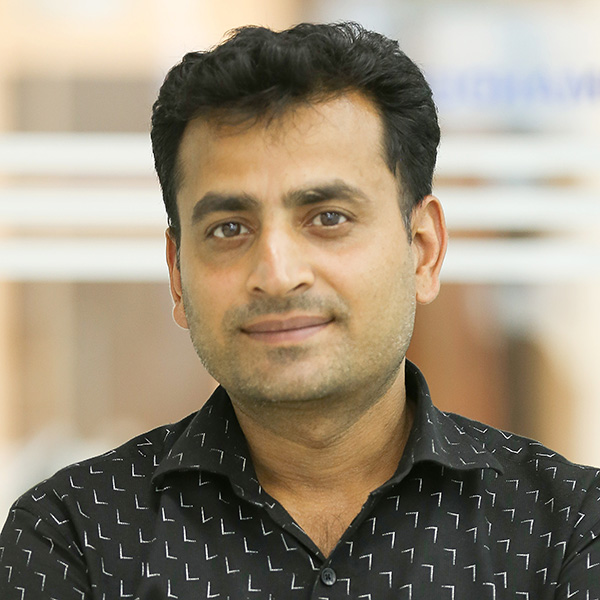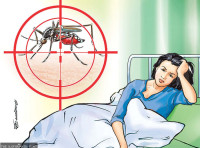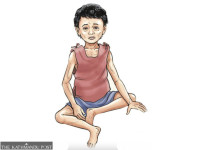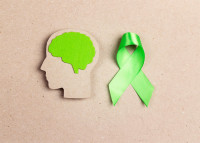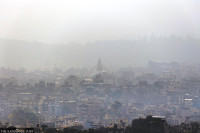Health
Essential medicines are free, but most patients in need are without them
Most patients suffering from non-communicable disease fear that they need to take medicines lifelong and may not afford to buy them.
Arjun Poudel
On Monday, a 55-year-old woman from Maijubahal in Kathmandu reached the Gaurighat-based urban health promotion centre to get the medicines for hypothyroidism. Health workers serving there told her that thyroxine 50 mg was out of stock and instead offered the drug’s 25 mg version, asking her to take two tablets once.
“The woman refused to take the medicine saying that she cannot take two tablets at once,” said Niruta Kumari Shrestha, pharmacy assistant serving at the centre. “A lot of patients visit our centre for free medicines, but we provide only the medicines that are in the government’s list of free essential medicines.”
Though medicines of hypothyroidism are not in the government’s list of 98 free essential medicines, the Kathmandu city office has allocated a budget to provide additional medicines free of cost.
The metropolis currently provides 108 types of medicines that include medicines of blood pressure, high blood sugar and asthma free of cost from its urban health promotion centres.
“Despite inclusion of additional medicines in the free essential list from the KMC’s own budget, a lot of patients have returned from the centres without medicines,” said Gyan Bahadur Oli, a health worker serving at the Health Department under the city office. “There are thousands of brands, formulations of medicines and each patient needs a different composition and dose.”
Doctors say that medicine used for one patient with a particular ailment may not necessarily suit another. Doses of medicines each patient requires may also vary.
“A 68-year-old man had come to our centre to change his blood pressure medicine, as the medicine he had been taking caused swelling of feet,” said Shrestha. “We have only two medicines for high blood pressure and the doctor’s prescription was different from the medicine we had.”
Sometimes patients need high-dose medicines that are not included in the free essential list. Health workers tried to manage this by providing several low-dose tablets and asking patients to take them at once, but patients found it uncomfortable.
A lot of patients seek medicines of gastritis in the state-run health facilities, but the medicine of tablet form is not included in free essential list.
Doctors say cost of the medicines are among the reasons that discouraged many patients of non-communicable diseases—high blood pressure, diabetes, thyroid, cholesterol, asthma among others from starting. They warn that health problems get exacerbated if patients refuse to take medicine on time and continue the medicines.
“Most patients suffering from non-communicable diseases including high blood pressure and high blood sugar refused to start medicines in the initial stage and said that they would change behaviour and come with another report in a few days,” said Dr Om Murti Anil, an interventional cardiologist. “Many patients keep the report to themselves and some even try to conceal it from their family members. Refusing to take medicines does not help cure ailments, instead problems get exacerbated.”
Experts say that if the list of free essential medicines are extended by all local units like the Kathmandu metropolis and medicines are made available in multiple doses, poor patients do not have to hesitate to start medicines of non-communicable diseases.
“We have to try hard to convince patients to start medicine and not to discontinue,” said Dr Dipak Malla, an endocrinologist serving at Bir Hospital. “Most patients say they will consult their family members first. They fear that medicines will be required for life.”
State-run health facilities across the country provide up to 98 types of medicines free of cost to ailing patients seeking cure. Free essential drugs include medicines for communicable and non-communicable diseases.
The burden of non-communicable diseases has risen alarmingly in Nepal in recent years. The Nepal Burden of Disease 2017 report attributed two-thirds (66 percent) of total deaths to non-communicable diseases, while the figure jumped to 71.1 percent in the 2019 report. The Global Burden of Disease 2021 shows 73 percent of deaths are caused by non-communicable diseases.




 9.12°C Kathmandu
9.12°C Kathmandu